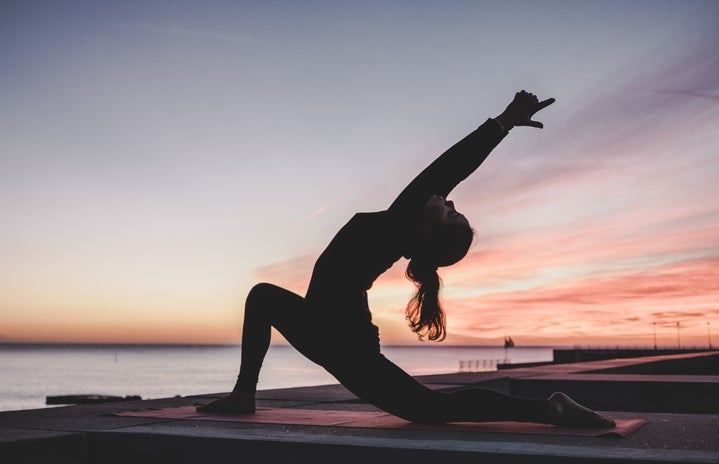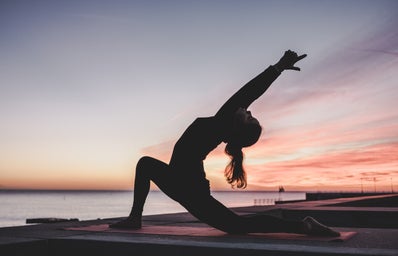This is going to sound silly, but when I was 17-year-old, all I wanted in life was a tan.
I was, what most would consider, (and rightfully so) an awkward teenager. Red hair, freckles, fair skin and an inability to style my hair or use makeup successfully, I was constantly fretting over the way I looked. In high school, looks are EVERYTHING. There wasn’t a single day when I woke up and was actually happy about the way I looked as I walked out the door and headed off to school. It was a constant struggle that I often masked with sarcasm and a quick wit (which I’m still rocking today).
While sitting with my family and one of our close friends at a hockey game one night, I started talking about my most hated characteristic: my pale skin. Our family friend immediately came to the rescue with a solution to my problem: she recommended I start using indoor tanning beds as a “safe” and “healthy” way to achieve the long desired tan.
“But aren’t those dangerous?” I asked her. She was after all, a nurse. She should know.
“No, they’re totally safe. It’s a controlled environment and better for you than the sun!”
Now, in her defense, this was about a hundred years ago. We didn’t know what we know now: tanning beds are extremely dangerous, emit 3-6 times the UV radiation of the sun, and cause cancer. They’re so dangerous that the FDA recently announced plans for a national ban on tanning devices for minors.
With a nagging hesitation, but conflicting excitement, I took her advice and head to a tanning salon the very next day.
I became hooked. Tanorexic. There’s no other way to put it. This was a full-blown addiction. Once a week I would frequent tanning beds all over western Massachusetts, searching for the best $5 deal, the newest bulbs and the strongest “enhancing lotions.” I was golden brown within weeks, something an Irish redhead should NEVER be. Something that no one who isn’t naturally golden brown should ever be for that matter.
I went about with this weekly routine for two and a half years. I baked outdoors any chance I got. Living in New England, I had but a brief three-month window where I could actually achieve a tan outdoors, but I made sure to keep up with my tanning bed habit even throughout the summer. There was no way I would return to that hideous pale creature I was back in junior year of high school.
Eventually it would catch up to me.
During my sophomore year of college I spotted a dark, itchy mole on my stomach. A voice, perhaps just a whisper, inside my head thought “that probably isn’t good.” I decided to get it checked the next time I was at the doctor’s office for my routine physical exam.
My primary care physician was less than concerned. “Looks fine, leave it alone,” she said when I brought it to her attention. Again, the voice: “No, not right. Get it removed.” I fought back, told her I didn’t feel right about it and that I wanted to have it removed. She was less than amused at this, now 19-year-old, attempting to dictate her treatment plans when she knew best. But I was un-phased by her repeated attempts to get me to ignore and wouldn’t leave her office until she wrote me the referral.
Two weeks later, my world would be turned upside down: I would be diagnosed with stage-2 melanoma, the deadliest form of skin cancer.
Little did I know, this was becoming a more and more common occurrence around the country: teens and young adult women across the United States would be receiving a similar diagnoses to mine. Melanoma was quickly becoming a “young women’s” cancer. It’s the second most common for of cancer for young people ages 15-29 and the only cancer increasing instead of declining in incidents.
The next month was a blur. I know people say that all the time, but it’s true. Here I was in college, supposed to be enjoying the best time of my life, battling cancer. The four weeks following my diagnosis would be filled with endless doctor’s visits, skin exams, radioactive dye injections and a 3-hour surgery that would result in four major scars and over 70 stitches. Drainage tubes were sewn into my incisions and would later be ripped from my body without novocaine. I would have eight lymph nodes removed from my body to determine if the cancer had spread. Luckily for me, it didn’t.
My journey, however, had only just begun. Melanoma is a cancer you have to consciously work towards preventing on a regular basis. No more tanning, either indoors or out, for me. No more careless days at the beach without SPF. No more tan skin.
After learning how to live a completely different life style, I realized that melanoma had come into my life for a reason: so I could become an advocate. I have been working in some capacity with the Melanoma Foundation of New England for over nine years. I’ve been a spokesperson for their signature, award-winning, national program Your Skin Is In, served as a speaker across the country, featured in countless media interviews including Teen Vogue, WebMD, Inside Edition and ABC World News, and given an award by Cosmopolitan Magazine.
The key to melanoma is prevention and early detection, a note I hit home every time I speak to a group of students whether it’s five or 500. If my story changes one mindset, helps one tanning addict overcome their addiction, or makes one person think twice about applying sunscreen, then everything I went through was worth it. Even if I had the chance, I wouldn’t change my journey for anything.

